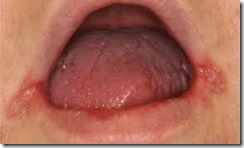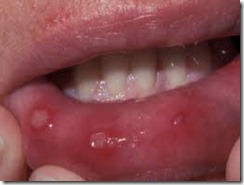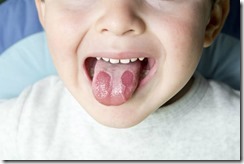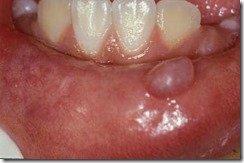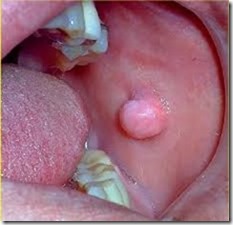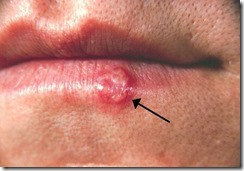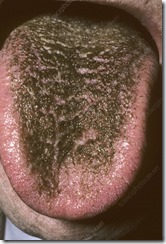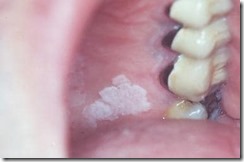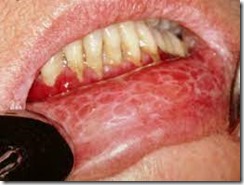Bebout Family Medicine
Available when you need us!332 North Court Street
Morganfield, KY 42437Monday - Friday
See our Office Hours PageCommon Oral Lesions
One of the common complaints in any primary care office is that of lesions in the mouth or surrounding tissue. I wanted to throw together a short visual representation of things that can go wrong in one’s mouth. This will not be an exhaustive survey by any means. BTW, I know nothing about teeth. I’ll leave that to the dentists!
Oral candidiasis (Thrush) – Thrush is one of the more common ailments to occur in one’s mouth and affects people from infancy through the elderly. It is basically an overgrowth of yeast inside the mouth that occurs anytime there is a decrease in immune response. You can also see it in people that use steroid inhalers for asthma or COPD. It can affect taste, cause difficulty in swallowing, and cause some degree of pain. Treatment is usually an anti-fungal but good oral hygiene and unsweetened yogurt can help as well.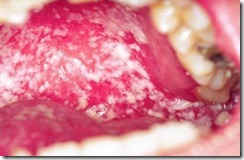
Angular Cheilitis – Inflammation and cracking in the corners of the mouth. It can be caused by a build-up of moisture in the corners of the mouth. This can occur with denture use, pacifiers, masks. It may also be associated with yeast overgrowth. Treatment involves stopping whatever is causing moisture build up. Also, the use of ointments, anti-biotics, and anti-fungals may be indicated.
Aphthous ulcers (Canker sores) – These are painful, shallow ulcers inside the lips and on the gums. They are very uncomfortable and may cause difficulty in eating. The exact cause is unclear. Most spontaneously resolve in 1-2 weeks but can be treated with anesthetics and various mouth rinses.
Geographic tongue – This is a harmless, inflammatory condition that causes the temporary loss of papillae in patches on the surface of the tongue. This gives the tongue a map like appearance. It is usually painless and is more alarming in appearance than it actually is. Spontaneous resolution is usually the norm.
Mucocele – This is a painless blister or cyst of mucous membrane of the mouth. They are often located on the inner surface of the lips and are caused by trauma to the area. They are usually painless and appear clear or bluish. Small ones may spontaneously resolve but they sometimes must be surgically removed.
Oral fibroma – a common benign scar-like reaction to persistent long-standing irritation in the mouth. They may appear somewhat like a mucocele but are more solid. Treatment is surgical but the source of irritation must be resolved as well.
Herpes simplex lesion (cold sore, fever blister) – This is a viral infection caused by the herpes simplex virus. Herpes viruses are transmitted by direct or indirect contact. The incubation period is 2-12 days. Infection results in a blistering, painful lesion that is recurrent. Recurrences may be triggered by stress, upper resp infections, sun exposure, or hormones. While there is no cure, outbreaks can be treated or controlled with anti-virals.
Black Hairy Tongue – Though it appears fairly disgusting, it is a generally harmless condition. The actual lesion is a buildup of dead skin cells on the papillae of the tongue. Causes may be antibiotics and tobacco usage. It causes the obvious discoloration of the tongue as well as bad breath. The tongue may appear furry. It is painless. Treatment involves avoidance of tobacco and brushing your tongue.
Leukoplakia – this exhibits as thick white patches in the mouth. While not cancerous, it may be a pre-cancerous condition. The patches cannot be scraped free. It is felt that they are usually caused by chronic irritation such as tobacco usage.
Oral Lichen Planus – A white lacy pattern inside the mouth. The cause is unknown but may be related to an immune issue, hepatitis C, certain medications, reactions to fillings, injury, or infections. Symptoms may involve redness, swelling, or peeling. There may be increased sensitivity to spicy or acidic foods. Steroids or other immune modulating medications may be used as treatment.
I purposefully did not address more complex issues such as cancers or complications from other diseases (such as HIV). I wanted to provide just a brief overview of common primary care complaints. As always, this is not intended to serve as a source of diagnosis. If you have a suspicious lesion, present to your physician’s office for further diagnosis and treatment. Remember…take care of your mouth!
